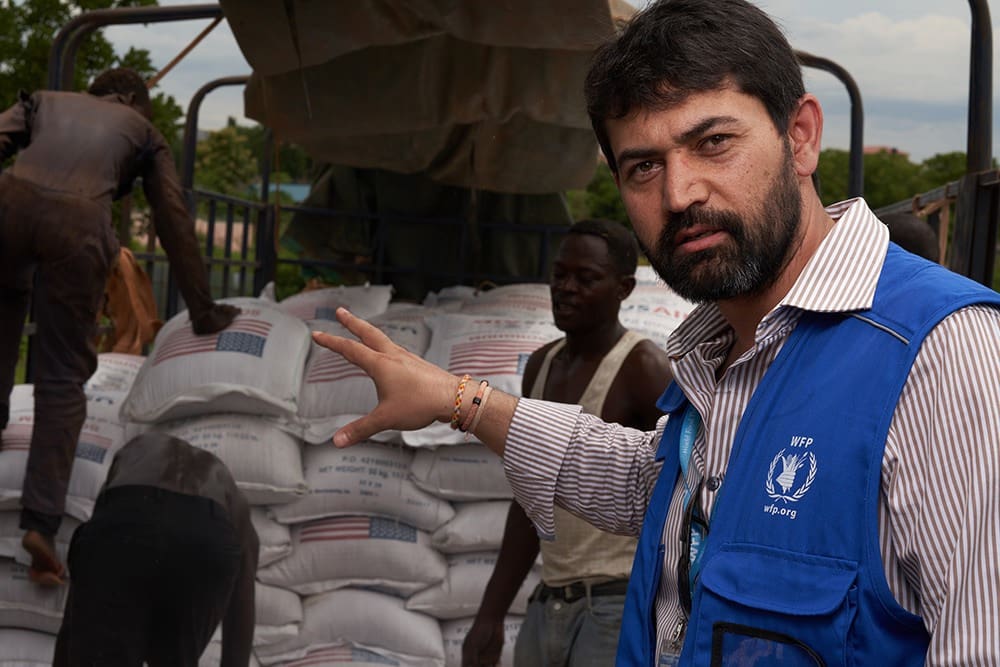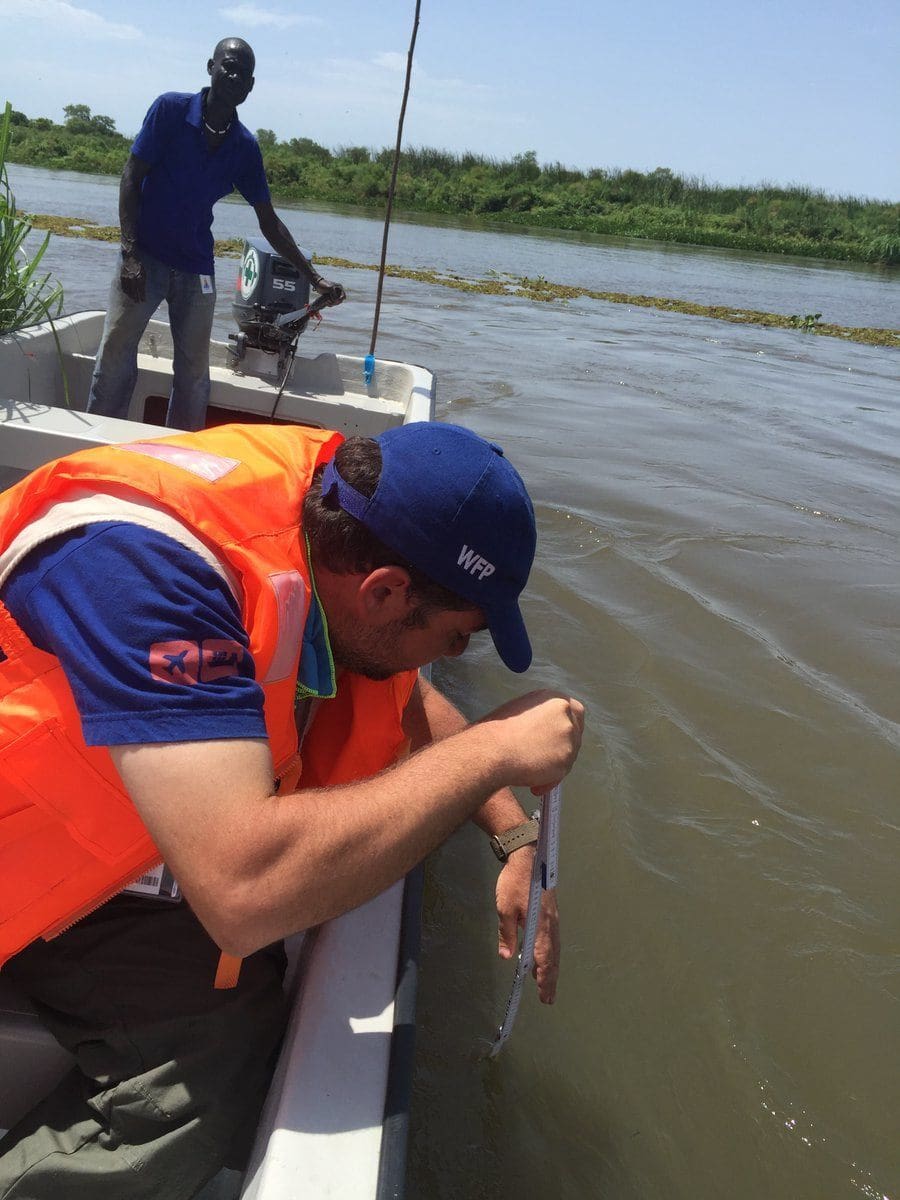
Pushing the Boundaries in South Sudan
Trying to deliver food to almost 5 million people is a gargantuan effort. Why? Because nothing is easy when conflict and rain converge to make it harder to reach families with humanitarian aid.
“It’s a huge team,” said Adham Effendi, WFP’s head of logistics in South Sudan. “We have a lot of third party contractors working with us. We manage our own trucking fleet as well, barges, aircraft, drop zone coordinators.”
Kandack, #SouthSudan | Accessibility is the biggest challenge. There are simply no roads. The only way we can help here is with airdrops. 🚁 pic.twitter.com/kgFX5ZQYZk
— WFP Africa (@WFP_Africa) May 18, 2018
With hunger set to peak from May to June, Adham is working with WFP’s partners in the field to scale-up assistance as the rainy season begins and the fighting continues.
About 7 million people—63 percent of the population—are severely hungry. That includes roughly 155,000 people on the brink of famine, and without sustained humanitarian aid, that number could rise. Some communities in areas like Boma are estimated to have no more than two to three weeks of food available.
This means every tool in the toolbox must be deployed. In places like Kandak, South Sudan, the only way to reach people in need is by air. In 2017, Adham’s staff unlocked safer and less costly ways to package and deliver lifesaving food by plane. These innovations have allowed WFP to strengthen its supply chain, delivering up to 10 times as much food in areas without roads and local food markets.
To mitigate the impact of the rainy season—which cuts access to 60 percent of the country when roads become inaccessible—WFP has prepositioned more than 100,000 tons of grains, beans, vegetable, oil, high-energy biscuits, and nutrition supplies like SuperCereal Plus in 50 strategically located warehouses. In the coming weeks, WFP hopes to increase that larger figure by more than 30 percent before the rains get worse—a lifesaving strategy to more reliably deliver food when it’s needed most.
“The impact that rain can create is massive,” Effendi said. “Because there is no infrastructure, no roads.”

WFP Logistics staff measure the depth of a channel on a stretch of the river Nile in #SouthSudan.
If 2017 was about maximizing the impact of food delivery by plane, Adham hopes 2018 will be the year of the river. In addition to the mighty Nile River, WFP hopes to map all of the rivers and streams in South Sudan to assess whether areas now being reached by airdrops could be reached by waterway. Earlier this year, after four years of hard work, WFP made its first delivery of food via river barge between Bor in central South Sudan to Malakal in the northeast.
“We want to find ways of increasing our deliveries on river,” he said. “How can we reduce our costs from air and expand river operations?”
A simultaneous effort is underway to improve road networks between the capital of Juba in the south and the remote area of central Rumbek, which connect to roughly 50 percent of the country.
The humanitarian agency and its partners have identified 16 “choke” points along the corridor for construction improvements to keep them open as long as possible into the rainy season. This year, WFP expanded its own fleet from 100 to 145 trucks, facilitating convoys with as few as seven trucks to as many as 90.
So what keeps Adham up at night?
“For me personally it’s pushing the humanitarian boundaries,” Effendi said. “We want to do the best we can to reach people who are in need of assistance.”




